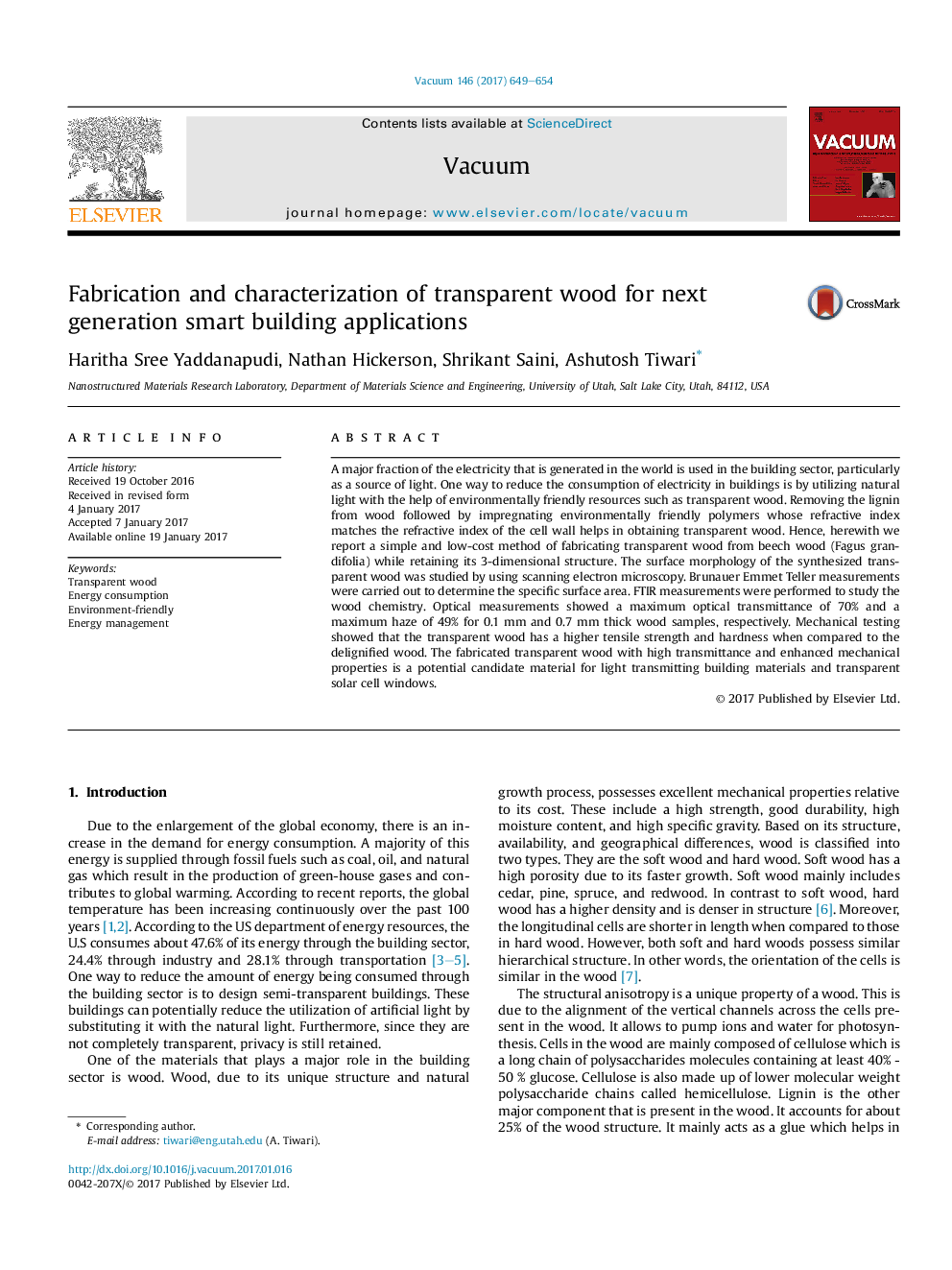| Article ID | Journal | Published Year | Pages | File Type |
|---|---|---|---|---|
| 8044819 | Vacuum | 2017 | 6 Pages |
Abstract
A major fraction of the electricity that is generated in the world is used in the building sector, particularly as a source of light. One way to reduce the consumption of electricity in buildings is by utilizing natural light with the help of environmentally friendly resources such as transparent wood. Removing the lignin from wood followed by impregnating environmentally friendly polymers whose refractive index matches the refractive index of the cell wall helps in obtaining transparent wood. Hence, herewith we report a simple and low-cost method of fabricating transparent wood from beech wood (Fagus grandifolia) while retaining its 3-dimensional structure. The surface morphology of the synthesized transparent wood was studied by using scanning electron microscopy. Brunauer Emmet Teller measurements were carried out to determine the specific surface area. FTIR measurements were performed to study the wood chemistry. Optical measurements showed a maximum optical transmittance of 70% and a maximum haze of 49% for 0.1Â mm and 0.7Â mm thick wood samples, respectively. Mechanical testing showed that the transparent wood has a higher tensile strength and hardness when compared to the delignified wood. The fabricated transparent wood with high transmittance and enhanced mechanical properties is a potential candidate material for light transmitting building materials and transparent solar cell windows.
Related Topics
Physical Sciences and Engineering
Materials Science
Surfaces, Coatings and Films
Authors
Haritha Sree Yaddanapudi, Nathan Hickerson, Shrikant Saini, Ashutosh Tiwari,
